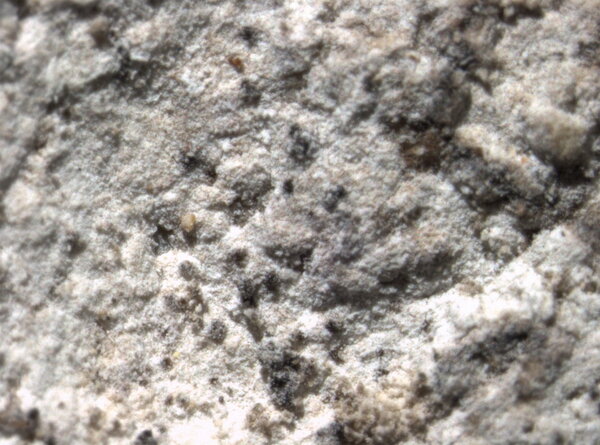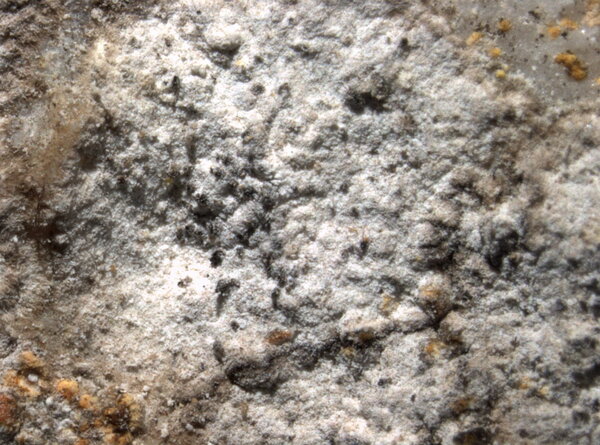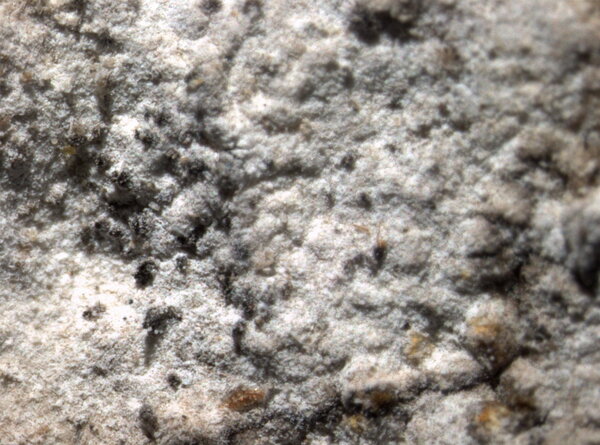Dirina massiliensis f. aponina (A. Massal.) Tehler
Lichenologist, 20: 398, 1988. Basionym: Pyrenotea aponina A. Massal., Ric. Auton. Lich. Crost.: 151, fig. 295, 1852 -
Synonyms: Lecanactis aponina (A. Massal.) Arnold
Distribution: N - VG (Nimis 1993, as D. cretacea). C - Mol (Nimis & Tretiach 1999)
Description: Thallus crustose, episubstratic, corticate, effuse, smooth to cracked or slightly areolate, 0.2-3.5 mm thick, creamy white to white-grey, rarely dark grey or grey-brown, pruinose, often delimited by a black to almost white prothallus, esorediate. Cortex of mainly anticlinally arranged hyphae, masked by many crystals of oxalates; medulla thick, white, chalk-like, filled with crystals. Apothecia absent. Pycnidia abundant, black, immersed or slightly projecting. Conidia thread-like, sickle-shaped, 12-16 x c. 1 µm. Photobiont trentepohlioid. Spot tests: thallus K-, C+ red, KC+ red, P-, UV-; medulla and soralia K-, C-, KC-, P-, UV+ yellowish. Chemistry: erythrin, lecanoric acid, unidentified substances.Note: a sterile, pycnidiate and esorediate form, which according to Tehler (2013) does not deserve a separation from the typical or the sorediate forms.
Growth form: Crustose
Substrata: rocks
Photobiont: Trentepohlia
Reproductive strategy: mainly asexual, by conidia and thalloconidia
Taxon bound to maritime-coastal situations
Commonnes-rarity: (info)
Alpine belt: absent
Subalpine belt: absent
Oromediterranean belt: absent
Montane belt: absent
Submediterranean belt: extremely rare
Padanian area: absent
Humid submediterranean belt: absent
Humid mediterranean belt: very rare
Dry mediterranean belt: very rare
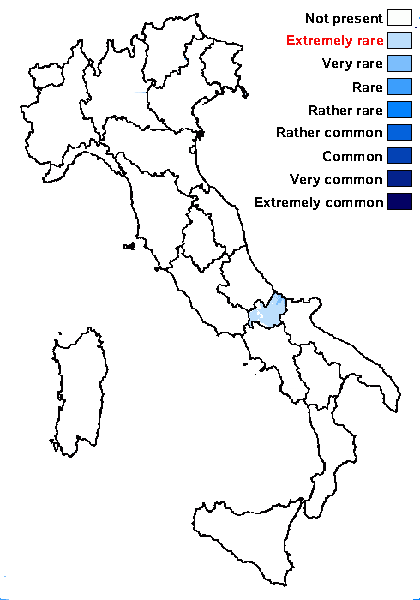
Predictive model
Herbarium samples
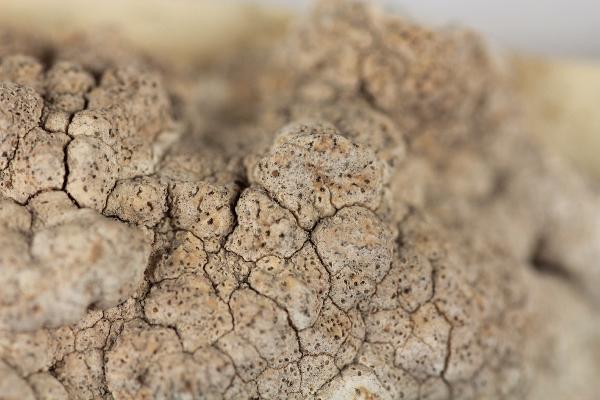
Collezione lichenologica Abramo Massalongo del Museo di Storia Naturale G. Ligabue di Venezia - Autori: Seggi, Linda; Trabucco, Raffaella Proprietà: Fondazione Musei Civici di Venezia - CC BY-NC
Italy, Veneto, in op. Apono
ISOTYPE

Collezione lichenologica Abramo Massalongo del Museo di Storia Naturale G. Ligabue di Venezia - Autori: Seggi, Linda; Trabucco, Raffaella Proprietà: Fondazione Musei Civici di Venezia - CC BY-NC
Italy, Veneto, in op. Apono
Pyrenothea aponina Massal. (non est lichen autonomus sed spermatocalia alius lichenis)

Collezione lichenologica Abramo Massalongo del Museo di Storia Naturale G. Ligabue di Venezia - Autori: Seggi, Linda; Trabucco, Raffaella Proprietà: Fondazione Musei Civici di Venezia - CC BY-NC
Italy, Veneto, in op. Apono
Pyrenothea aponina Massal. (non est lichen autonomus sed spermatocalia alius lichenis)
Growth form: Crustose
Substrata: rocks
Photobiont: Trentepohlia
Reproductive strategy: mainly asexual, by conidia and thalloconidia
Taxon bound to maritime-coastal situations
Commonnes-rarity: (info)
Alpine belt: absent
Subalpine belt: absent
Oromediterranean belt: absent
Montane belt: absent
Submediterranean belt: extremely rare
Padanian area: absent
Humid submediterranean belt: absent
Humid mediterranean belt: very rare
Dry mediterranean belt: very rare

Predictive model
| Herbarium samples |

Collezione lichenologica Abramo Massalongo del Museo di Storia Naturale G. Ligabue di Venezia - Autori: Seggi, Linda; Trabucco, Raffaella Proprietà: Fondazione Musei Civici di Venezia - CC BY-NC
Italy, Veneto, in op. Apono
ISOTYPE

Collezione lichenologica Abramo Massalongo del Museo di Storia Naturale G. Ligabue di Venezia - Autori: Seggi, Linda; Trabucco, Raffaella Proprietà: Fondazione Musei Civici di Venezia - CC BY-NC
Italy, Veneto, in op. Apono
Pyrenothea aponina Massal. (non est lichen autonomus sed spermatocalia alius lichenis)

 DOLICHENS
DOLICHENS
